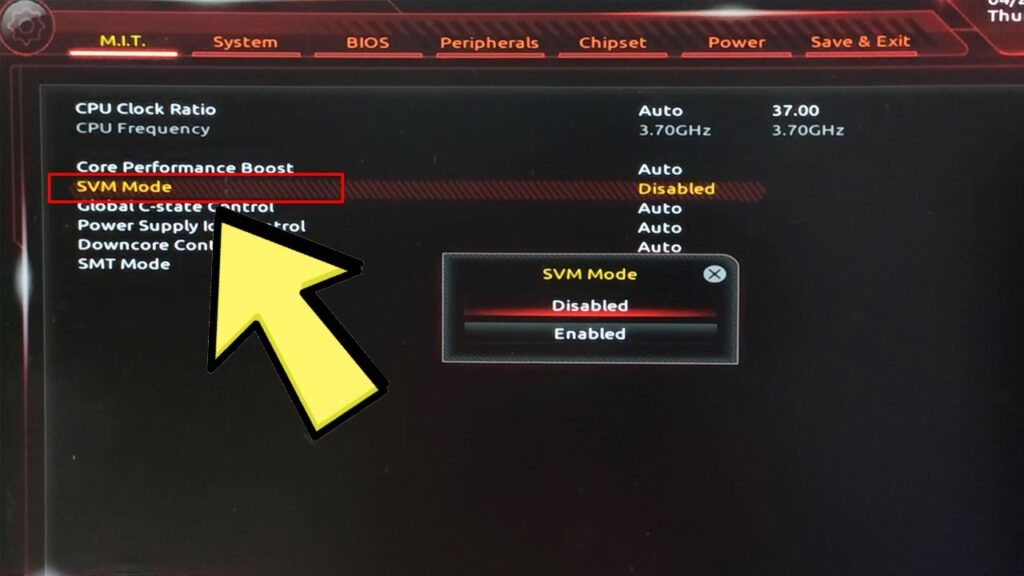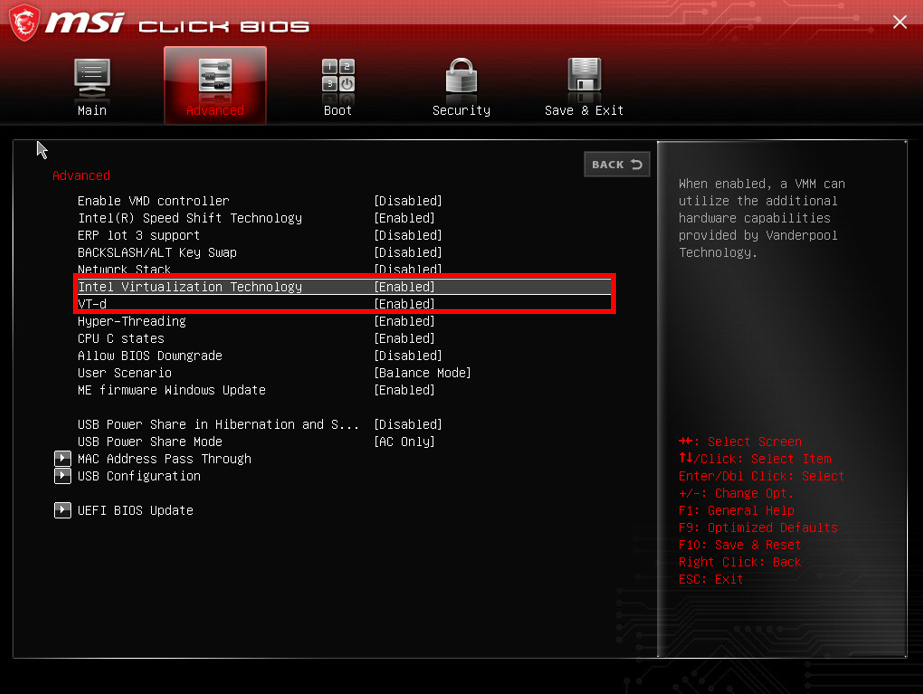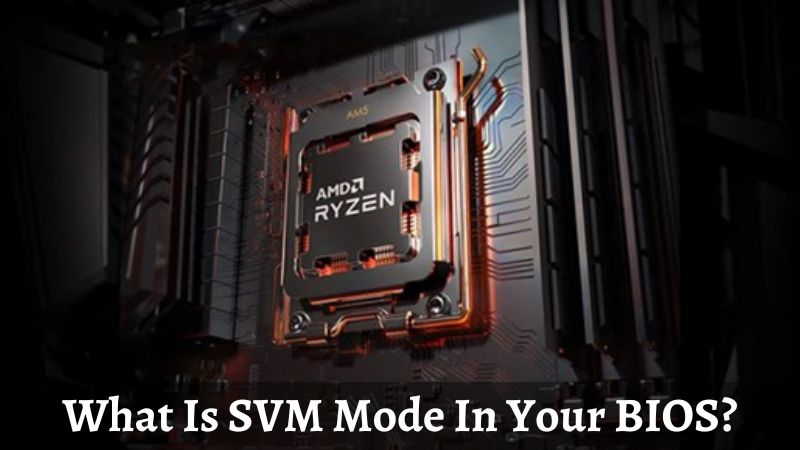What is SVM Mode in your BIOS? SVM Mode is a choice within an AMD motherboard’s BIOS to enable what’s called a Secure Electronic Machine.
In addition to giving a protected virtual unit setting, SVM also allows for more direct use of the electronics than without. What this means is improved efficiency when working with Electronic Machines, which can be the main good thing about enabling specialized BIOS options like this.
Besides being called SVM, AMD also calls the engineering AMD-V, therefore it could be listed in your BIOS under that name.
Obviously, this begs the quick issue if you are an Intel person: have you got an equivalent in your BIOS?
Is There an Intel Equivalent to SVM Mode?
Yes, there is an Intel comparable to AMD-V/SVM Mode called Intel VT-x, or Intel Virtualization.
Virtually, just choose a virtualization-related solution in your BIOS and you should be ready to find it.
What Is A Virtual Machine?
A Electronic Equipment generally serves as an isolated instance of still another os being work within a course on your primary operating system.
It isn’t just like a different os totally, since that needs an entirely separate computer partition.
Using Electronic Equipment programs like VMWare or VirtualBox, you are able to work an isolated OS within your primary OS without needing to restart to modify surfaces or need to create a different OS mount partition at all.
As an example, you need to use this to perform a Mac or Linux Electronic Equipment in just a Windows OS.

Does Enabling Virtualization Impact Performance?
Outside utilising the virtual unit itself, efficiency for the others of your PC operating commonly, shouldn’t be impacted by enabling virtualization.
But, there are combined studies about some virtualization options trying out extra efficiency or causing modest dilemmas when they’re allowed, therefore I wouldn’t recommend enabling virtualization when it isn’t in active use.
Now, within the Electronic Equipment itself, how is efficiency impacted in comparison to a proper os installment?
This can differ depending on numerous factors, but over all since Electronic Machines have small (if any) direct use of the electronics, there is an important efficiency penalty when operating anything in a VM compared never to using virtualization at all.
Virtualization has some commonalities with emulation in this and other regards, but the 2 aren’t quite the same. Where emulation employs pc software to replicate electronics, virtualization is more about producing an independent operating setting for a different OS that has part or all of the sponsor machine’s electronics sources assigned.
The efficiency expense from virtualization is fairly modest compared to the charge of emulation.

What Kind of Use Cases Need Virtualization?
So, when do you really need to start considering Virtualization?
Let’s discuss some cases where virtualization will come in handy.
In servers and knowledge stores, virtualization is used fairly often to split resources.
If you have actually applied a site like Google Stadia or GeForce Now, you are really streaming the game from one of many virtual products in a specific host farm.
In cases similar to this, sources like complete CPU cores are usually split consistently between however many VMs are present.
External of those server-grade cases, listed here is where you will need to make use of virtualization:
- For screening or creating programs for other os’s.As an example, an Android or macOS VM on a Windows unit can be hugely helpful for an Android app developer.
- For enjoyment and games…from other os’s.If you are a hardcore PC gamer and need use of play that hot Android game all your friends are playing without employing a phone? An Android VM like BlueStacks is a great selection for you.
- For using output pc software from still another OS.Claim you have recently moved to Windows from Mac OS and are lacking your favorite OS X tools. With virtualization, you are able to however accessibility those programs, letting you omit understanding a brand new workflow for a brand new application.
- For if you have numerous people use one unit and need anything more secure than Windows Person Accounts or Users needing different Running Programs.Work with a alternative like Unraid to maintain electronics efficiency if you are employing a alternative similar to this, though.
FAQ
What if SVM Mode isn’t in my BIOS?
Well, first confirm that you aren’t utilizing an Intel processor.
If you are utilizing an Intel model and motherboard, you may need to enable Intel VT-x or still another Help Virtualization solution in your Intel BIOS.
If you are utilizing an AMD model, it are often called AMD-V as opposed to SVM Mode.
Basically what you are performing is searching for your applicable BIOS selection for enabling virtualization.

How do I check if virtualization is enabled?
A fairly simple way to achieve this is always to open the Efficiency tab in Task Supervisor on Windows (CTRL+SHIFT+ESC).
Select CPU, and near the bottom where your various CPU features are listed, you should see if Virtualization is allowed or maybe not under “Plausible processors&rdquo ;.
Is a Virtual Machine less powerful than a regular Operating System?
Yes.
For just one, virtualization by their own nature is going to add some overhead.
It’s hard to green down exactly how much since it can transform depending on many different factors, but expect at the least anywhere in the range of a 5% efficiency deficit for the CPU and memory. This deficit shouldn’t bunch per-VM, though.
Depending on the alternative, virtual products may perform surprisingly near the original hardware.
Like, Unraid can be used to show an individual PC in to several by separating up accessible resources.
That is sufficient at utilising the electronics that it’s useful for gaming applications, and LinusTechTips infamously managed to get 10 gaming stations operating off of an individual unit by using this Virtualization pc software:
What kind of hardware is good for use with Hardware Virtualization?
If you are seeking to make use of Hardware Virtualization to perform more than one Electronic Machines on your PC, make sure to look out for the appropriate hardware.
The key electronics that is taxed by virtualization is the CPU and your RAM.
When you need great results with a VM, make sure to decide for a high-end CPU (Core i7 or Ryzen 7 or better) with at the least 16 GB of RAM, ultimately more if you intend on utilizing your VM along with your primary OS on an everyday or standard basis.
Aren’t sure exactly how much RAM your workload needs? Study Alex’s excellent How Significantly RAM Do You Require report for a detailed breakdown!
Need some solid Memory recommendations? Contemplate looking at my Samsung B-Die Information, which include some top quality B-Die RAM packages for you yourself to choose from.
Over To You
And that is it, for now! I am hoping this report cleared up precisely what SVM Mode and the virtualization that it enables is.
When you have any issues, Feel free to ask us in the comments or our community!











